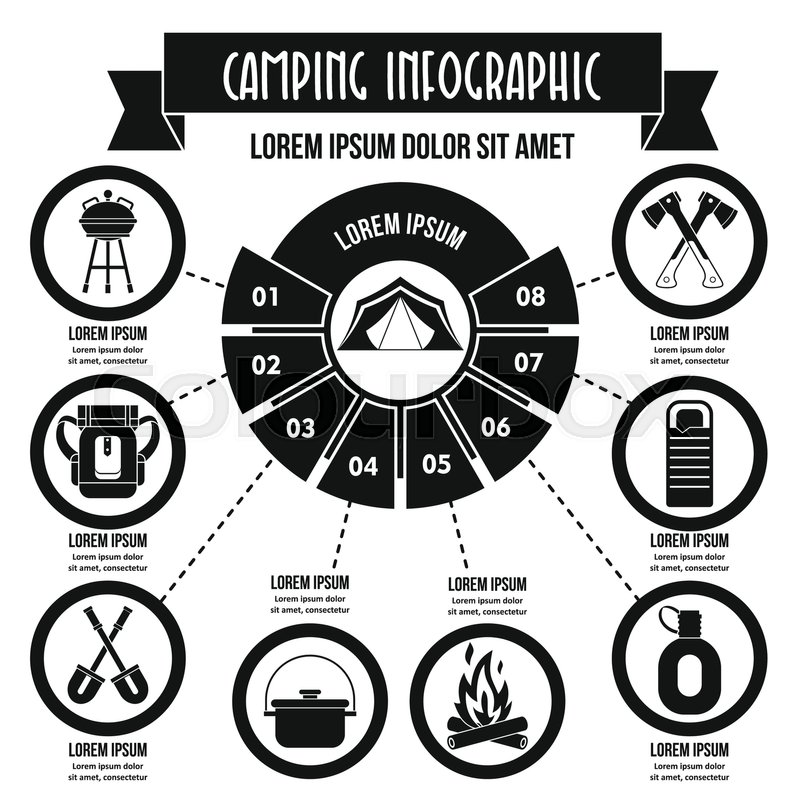Bell outdoors tents are becoming progressively popular as flexible, stylish shelters for camping and glamping. However what's the background behind this enduring design?
What is the meaning of Glampers?
Henry Hopkins Sibley patented the single-pole conelike outdoor tents that we understand as a bell outdoor tents. However, he abandoned to the Confederacy and never obtained his royalties.
Eventually, someone else included brief wall surfaces to the cone cover and created what we currently called a bell outdoor tents.
Beginnings
The popularity of bell tents is expanding, and they're currently a staple at camping festivals and as elegant backyard hideaways. Their sizable insides offer a flexible home from home setting that's ideal for family members and teams of close friends, while the circular design aids with stability in strong winds.
The design of the modern-day bell camping tent can be traced back to army camping tents made use of by European militaries during the Crimean Battle in 1853-1856. Then, in America, a soldier called Henry Hopkins Sibley patented a comparable structure that attracted motivation from American Tipis.
Both layouts are still being used today. However, Sibley camping tents differ from their even more recent relatives in that they have side wall surfaces and an increased larger entry. Sibley camping tents additionally count on a single main pole for assistance which makes them simpler to establish yet limits arrangement choices.
Objective
Bell camping tents' one-of-a-kind shape and sizable insides make them the perfect selection for a vast array of exterior tasks. Whether you're hosting a backyard camping celebration, glamping at a remote natural resort or going on an impressive fantasy-inspired experience, the convenience of these camping tents makes certain that your experience will fit and trendy.
The bell-shaped outdoor tents was originally patented in 1856 by Henry Hopkins Sibley, that had made the design after observing Indigenous American tipi tents. However, he resigned from the United States Army at the break out of the Civil Battle, surrendering his civil liberties to future royalties.
Ever since, the design has come to be a staple of many glamping experiences. These extravagant tents typically include luxurious bed linens and en-suite bathrooms, providing campers the possibility to enjoy nature without compromising convenience.
Layout
In the modern day, bell camping tents have actually experienced a resurgence in popularity, as people seek an extra immersive outdoor experience. They are utilized in a selection of setups, including camping, glamping, and events. Their special form, spacious interiors, and fairly very easy setting up make them a popular option for those looking for an elegant, historic style to their outside experiences.
The distinctive shape of a bell outdoor tents develops high ceilings and enough headroom, making it comfy to stand up in and move around. On top of that, the center pole is not placed near the entry of the tent, permitting more personal privacy and area inside the sanctuary.
The bell camping tent layout traces back to an American soldier called Henry Hopkins Sibley, who was influenced by Native American tipi tents when establishing his version of the bell camping tent in 1856. His style was a substantial enhancement over traditional military outdoors tents, which were challenging to carry metal tents because of their complicated construction.
Materials
In modern-day times, Bell Tents are crafted from premium materials that are developed for long-lasting sturdiness. This is why they are a prominent selection among leisure campers, festival-goers, and glampers alike.
In the 19th century, a United States Military officer named Henry Hopkins Sibley adapted conventional camping tents right into what is now known as the modern bell camping tent. He based his layout on Native American Tipi structures, adding brief walls to the main pole framework that made it more steady.
Today, polycotton canvas is a common material made use of in the construction of bell tents. This mix of cotton and polyester uses a vast array of advantages, consisting of breathability, premium weather resistance, and less complicated upkeep than pure cotton canvas. This material is also long lasting and abrasion-resistant. It is thicker than a lot of nylon textiles, nevertheless, which can make it hefty and much more expensive than regular outdoors tents.
Modern
In modern, the popularity of Bell Tents has taken off thanks to glamping websites and events providing these sizable outdoors tents for pairs, teams and family members to enjoy. The visual charm and resilience of these circular outdoors tents are attracting lots of campers.
Whether it be rain or wind, these camping tents hold their very own versus the aspects. Typically, they're made with canvas that is treated to secure versus dampness, mildew and UV rays.
How much does a 5m Bell Tent weight?
It isn't clear exactly when these camping tents were created, but it's widely known that they're a variant of a Sibley outdoor tents - called after Henry Hopkins Sibley, that adapted the design of the American Indian tipi. It is thought that whoever included brief wall surfaces to Sibley's cone cover was accountable for the creation of the bell camping tent as we understand it today.
